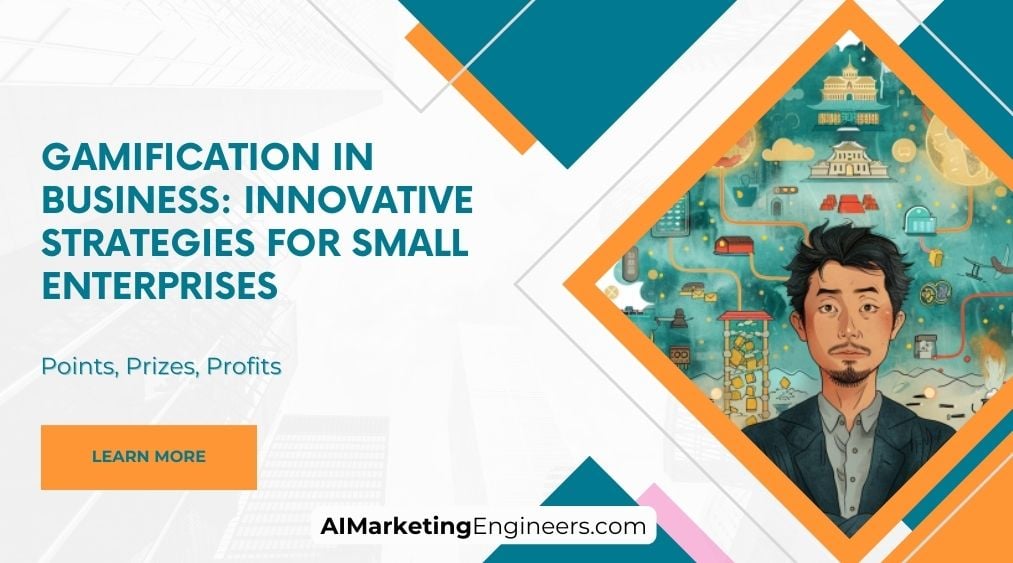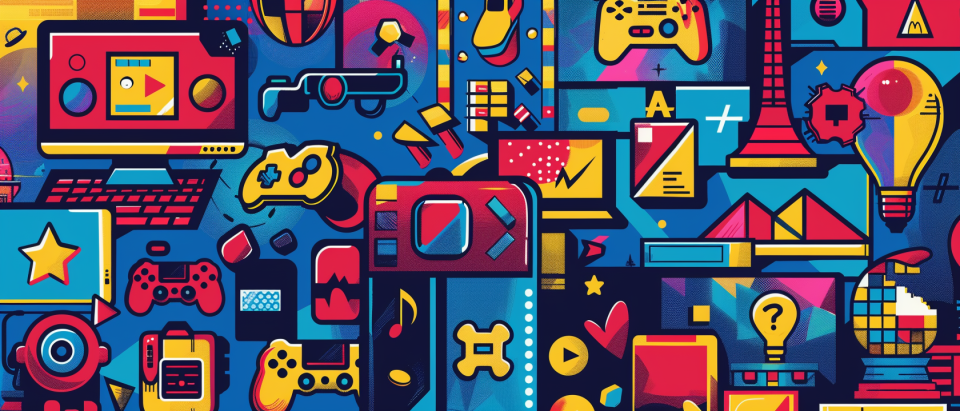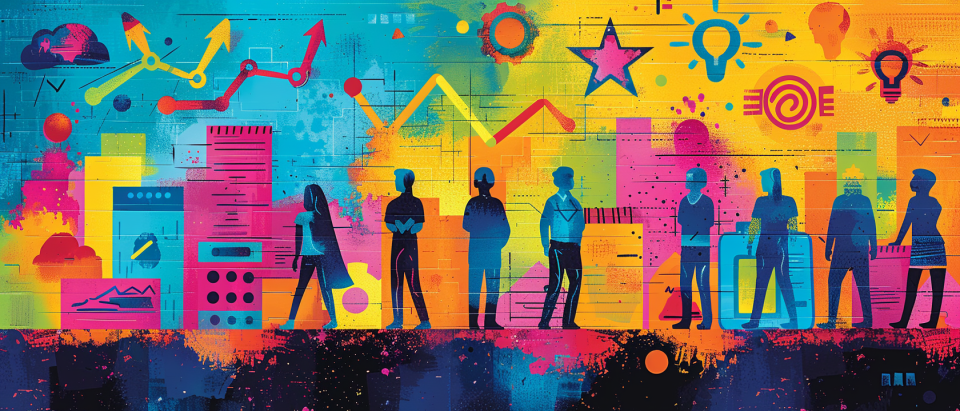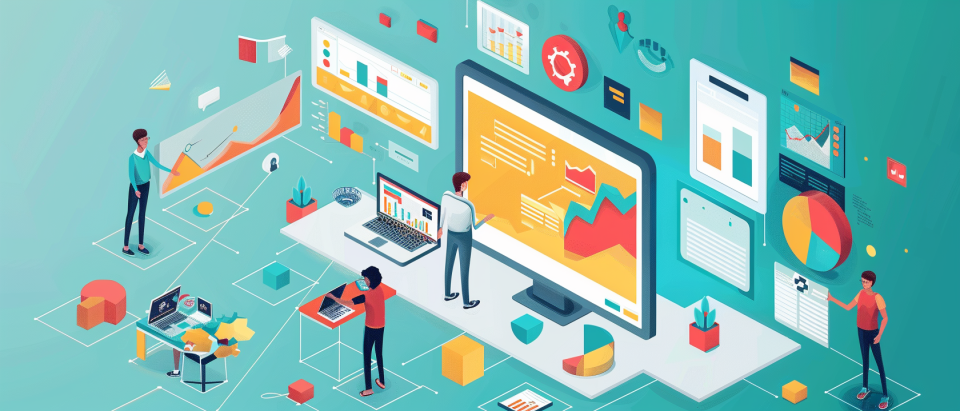Key Takeaways
✅ Gamification Enhances Engagement and Motivation: Incorporating game elements like points, badges, and rewards into your business can heighten both employee and customer engagement, boosting overall performance and satisfaction.
✅ Gamification Can Be Implemented in Various Ways: From loyalty programs to customer service, integrating gamification into different business areas can create a fun and rewarding atmosphere that encourages repeat business and peak employee performance.
✅ Effective Gamification Requires Meaningful and Personalized Approaches: Success hinges on using thoughtful, personalized game mechanics that go beyond simple points and badges. Creating meaningful rewards and adapting strategies based on user feedback are essential.
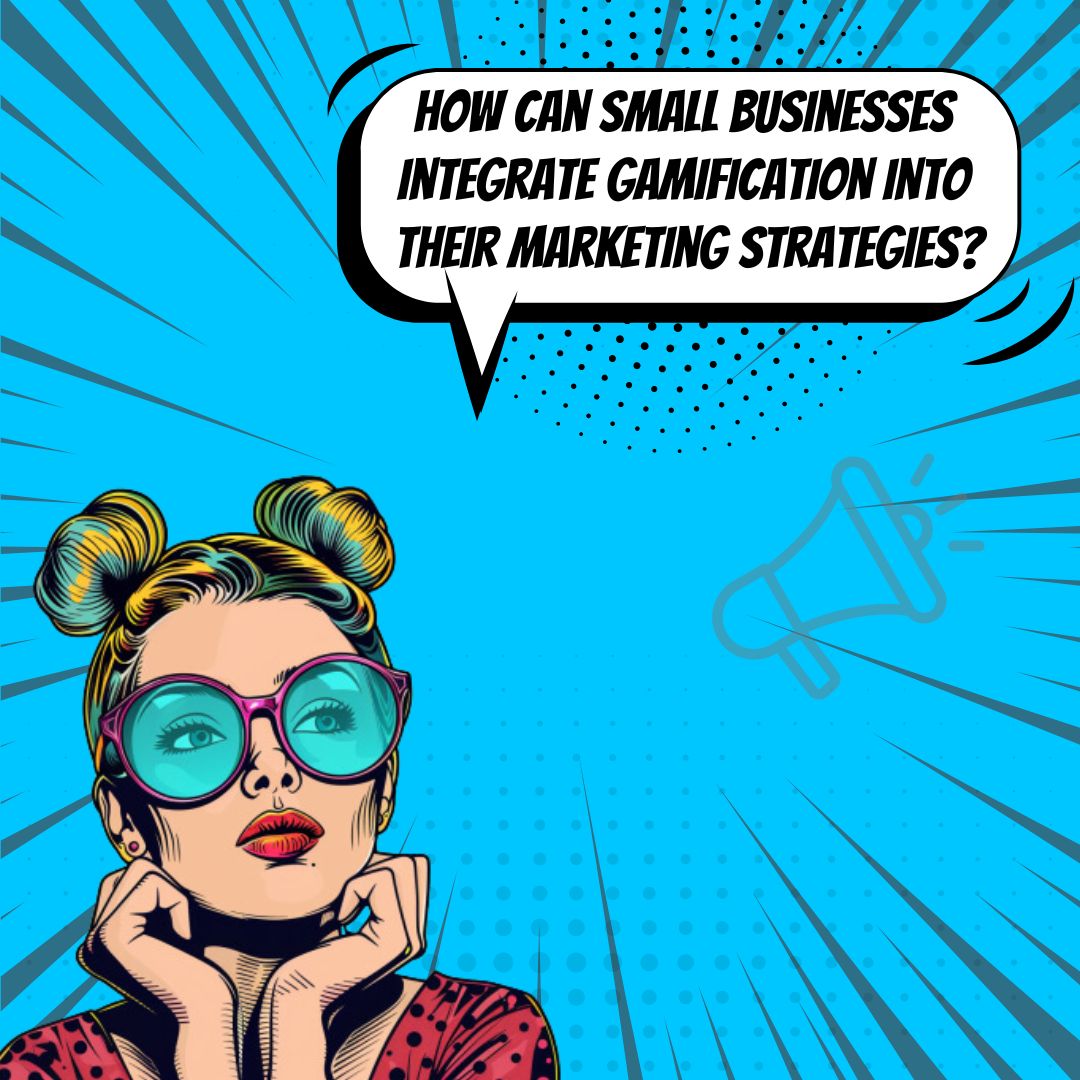
Introduction
How can small businesses stand out in today's crowded marketplace? Gamification is proving to be a game-changer, leveraging game mechanics to enhance customer engagement and employee performance. This article explores creative gamification strategies small enterprises can utilize to drive innovation and thrive. We'll dive into modern tactics, revealing how they maximize revenue and ROI, promising actionable insights and groundbreaking tips for your business.
Top Statistics
| Statistic | Insight |
|---|---|
| Global Gamification Market Growth: Expected to grow at a CAGR of 12.9% between 2021 and 2025. | This rapid growth signals lucrative opportunities for businesses to integrate gamification strategies early. |
| Market Value: Projected to reach $27.5 billion by 2025, with a yearly growth rate of 14%. | The substantial market size underscores the increasing demand for gamification solutions across industries. |
| Employee Engagement: Gamification increases employee engagement by an average of 48%. | Employee engagement is crucial for productivity, and this statistic highlights how gamification can play a pivotal role in achieving it. |
| Training: 61% of employees in the United States are trained using game-based activities. | This shows a significant adoption of gamification in training, which can lead to better skill development and job performance. |
| Employee Happiness: Gamification can increase happiness in employees by 89%. | A happier workforce can lead to lower turnover rates, making gamification a wise investment for long-term satisfaction. |
What is Gamification?
Gamification is the process of integrating game mechanics into non-game contexts to motivate participation, engagement, and loyalty. This approach employs points, badges, levels, rewards, and competition to make activities more engaging and fun. For example, a company could use a points system to encourage employees to meet sales targets or introduce badges for customers who make frequent purchases.
Benefits of Gamification for Small Businesses
Small businesses stand to gain significantly from gamification. One major benefit is increased engagement across social media and internal operations. By turning routine tasks into enjoyable challenges, employees are more likely to participate enthusiastically. Another advantage is improved customer experience, making interactions more interactive and immersive. This can lead to higher customer satisfaction and repeat business. Additionally, gamification enhances employee performance and motivation, encouraging them to go the extra mile. Beyond these benefits, it also serves as a cost-effective marketing strategy with measurable results, allowing businesses to track ROI. With effective gamification, small businesses can compete with larger brands by maintaining high levels of customer and employee engagement.
Implementing Gamification in Small Businesses
When incorporating gamification, it's important for small businesses to start small. Begin with manageable projects to test and refine gamification strategies. The next step is to understand your audience by identifying their motivations and behaviors. Knowing your audience ensures that the gamified elements will resonate. Then, choose the right tools that align with your business goals. There are several gamification platforms available, so pick the one that best fits your needs. Finally, always monitor and adapt your strategies based on feedback and results. Continuous improvement is key to sustaining engagement.
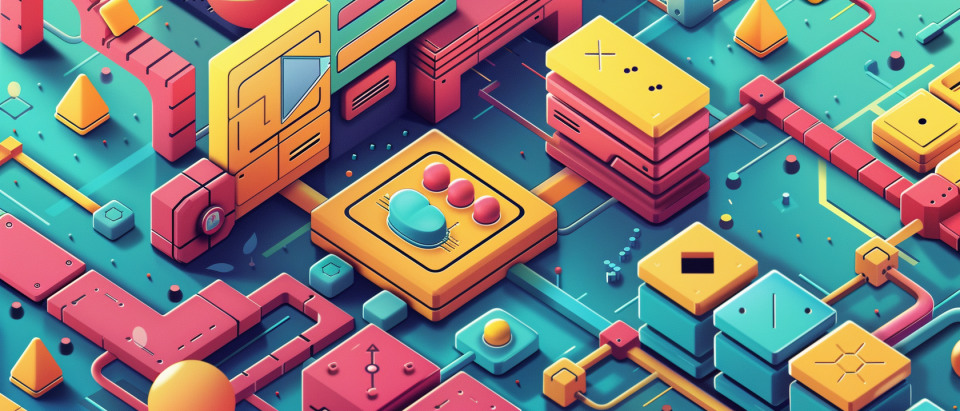
Gamification Strategies for Small Businesses
One effective strategy is to implement loyalty and rewards programs. Using point systems, badges, and levels can incentivize repeat customers and build loyalty. Another area where gamification can be highly effective is in customer service. Introducing game elements can improve both employee motivation and customer satisfaction. For marketing campaigns, gamification can create more engaging and interactive experiences. An example could be a social media challenge that encourages customers to share content related to your brand for rewards.
Best Practices for Sustainable Gamification
To ensure long-term success, it's crucial to make it meaningful. Achievements should represent genuine effort and offer both intrinsic and extrinsic rewards. Also, it's important to go beyond points and badges. Incorporating a variety of game mechanics, such as storytelling and real-time feedback, can drive deeper engagement. Finally, resist the temptation to cut corners. Combine gamification with learning, personalization, and real-time feedback for sustainable results.
In summary, gamification is a powerful tool for small businesses looking to drive engagement, improve performance, and enhance the customer experience. By understanding its benefits and implementing effective strategies, small businesses can not only stand toe-to-toe with larger brands but also achieve their goals with measurable success.
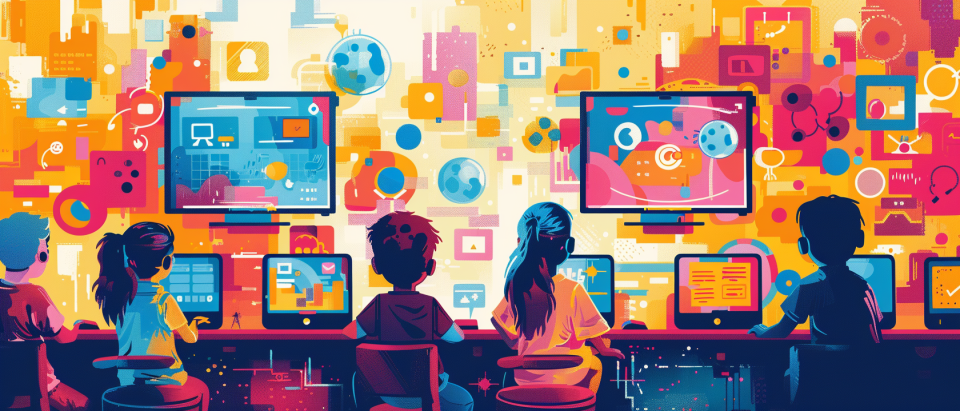
AI Marketing Engineers Recommendation
Recommendation 1: Incorporate Leaderboards to Boost Engagement: Studies show that leaderboards can increase user engagement by up to 50%. By creating systems that highlight top performers, small businesses can leverage an innate competitive spirit among customers or employees. According to Gartner, by 2024, 80% of large enterprises will leverage gamification in some form. Small enterprises can start small by using simple leaderboard integrations to foster a sense of achievement and community.
Recommendation 2: Personalize User Experience with Gamification Techniques: Current trends suggest a significant shift towards personalized user experiences. Implementing personalized gamification techniques—such as custom challenges or tailored rewards—can significantly improve user retention. Data from the Aberdeen Group reveals that personalized experiences can yield a 20% increase in engagement rates. Small businesses should focus on gathering user data to tailor these experiences effectively.
Recommendation 3: Utilize Gamified Training Programs to Enhance Learning: A practical application of gamification is in employee training. Gamified training programs can enhance learning outcomes by 60%, according to the Brandon Hall Group. Small enterprises can adopt tools like Quizlet or Kahoot! which offer gamified learning solutions. These platforms provide interactive and enjoyable learning experiences, helping to improve knowledge retention and employee productivity.
Relevant Links
- Revolutionize Digital Marketing with AI
- Set Impactful Campaign Goals and Objectives
- Market Penetration Secrets with Campaign Reach
- Boost Engagement with Personalized Ads
Conclusion
Gamification is a powerful tool for small businesses to drive engagement, improve performance, and enhance customer experience. By beginning with manageable projects, understanding your audience’s motivations, and selecting the right platforms, small enterprises can effectively integrate game mechanics into their operations. The benefits are substantial: from increased social media interaction to improved internal operations and customer satisfaction.
Implementing loyalty and rewards programs, gamifying customer service, and creating interactive marketing campaigns are just a few ways gamification can make an impact. To sustain these efforts, it’s crucial to make achievements meaningful, go beyond simple points and badges, and avoid cutting corners by offering a personalized and real-time experience.
Ultimately, gamification allows small businesses to compete with larger brands and achieve their goals. The key lies in continuous monitoring and adaptation, ensuring that every gamification strategy is informed by feedback and results. Are you ready to harness the power of gamification for your business? The game is on.
FAQs
Question 1: What is Gamification?
Answer: Gamification is the practice of adding game-design elements and game principles in non-game contexts to encourage participation, engagement, and loyalty. It involves using game mechanics such as leaderboards, points systems, badges, and up-leveling to tap into a learner’s natural human drive for competition and achievement.
Question 2: What is the Science behind Gamification?
Answer: Gamification works by enlisting the brain’s natural endorphin release mechanism. Endorphins are triggered by effort and are enhanced by pleasurable stimuli, such as rewards and accolades. This leads to the release of dopamine, which reinforces the behavior.
Question 3: What is Gamification used for?
Answer: Gamification is used to improve engagement and motivation in various areas, including e-learning, sales performance, customer loyalty, and employee onboarding. It can be applied to any activity where regular effort is accompanied by rewards or recognition.
Question 4: Is Gamification the same as Game-Based Learning?
Answer: No, gamification and game-based learning are different strategies. Game-based learning involves using games as part of the learning process, whereas gamification involves applying game elements to non-game contexts to encourage specific behaviors.
Question 5: Why should I use Gamification?
Answer: Gamification enhances engagement and measures effectiveness. It can be used to make learning more enjoyable and interactive, leading to better retention of knowledge. The gamification market has grown significantly, indicating its effectiveness.
Question 6: How do I implement Gamification effectively?
Answer: To implement gamification effectively, you should:
- Identify the business problem the training program addresses.
- Understand the learner profile.
- Ensure the quality of course content is relevant, engaging, and up to date.
- Design the course to engage learners and measure progress.
- Gather feedback to improve the program.
Question 7: Can Gamification be used for adult learners?
Answer: Yes, gamification can be used for adult learners. It is not limited to any specific age group and can be applied to various topics such as marketing, sales, onboarding, financial training, and compliance.
Question 8: Is implementing Gamification expensive?
Answer: Implementing gamification does not have to be expensive. It can be done with the right technology solution, and the return on investment (ROI) should be measured by its impact on business outcomes such as customer ratings, sales, and quality output.
Question 9: Can Gamification sustain learner interest in the long term?
Answer: Yes, gamification can sustain learner interest in the long term if implemented with a thorough analysis of the learner’s needs and a proper strategy to maintain engagement.
Question 10: What are the key elements of a well-designed learning game?
Answer: A well-designed learning game should:
- Be relevant to learning.
- Be simple to comprehend and play.
- Acquire knowledge or skills that are useful in day-to-day life or the workplace.
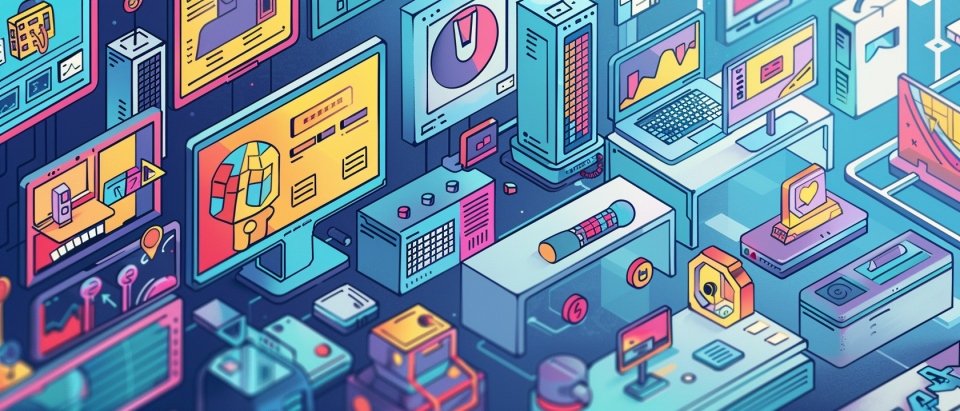
Academic References
- Accept Mission. (2021). What Is Gamification & How Can It Be Used To Promote Innovation? This source elucidates how gamification can foster creativity-inducing activities, enhance co-creation between leaders and employees, and optimize hackathons for innovation.
- Bretzfield, M. (2023). Maximizing Engagement: Innovative Gamification Strategies in Marketing. This document sheds light on how gamification in marketing enhances customer engagement and brand loyalty by incorporating game mechanics into non-game environments.
- Forbes Technology Council. (2019). 15 Innovative Ways Businesses Can Leverage Gamification. This report outlines how gamification can reveal existing metrics, incentivize teams to achieve goals, foster both individual and collective motivation, and increase user engagement.
- EveryoneSocial. (2024). 6 Gamification Strategy Tips for Your Business. This guidance advises on effective gamification strategies by taking a long-term perspective, avoiding an overemphasis on rewards, creating a level playing field, and focusing on engagement.
